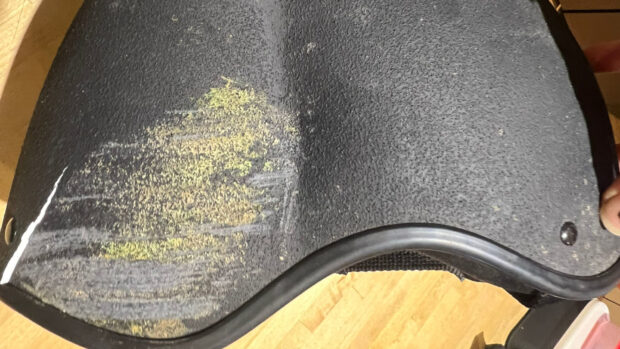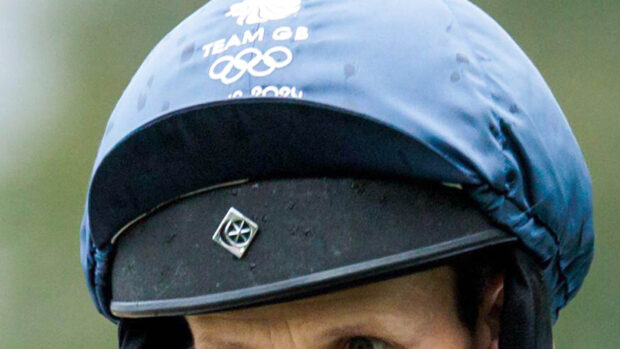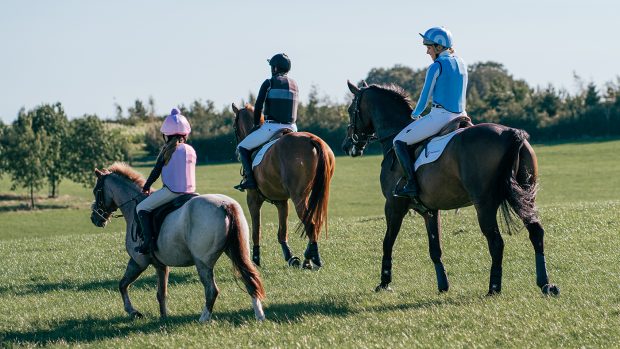“What is one of the major differences between an amateur and a professional rider?” asked British Eventing Coaching Development Team (BE CDT) trainer Jonathan Chapman BHSI (pictured right) as he kicked off the second in a nationwide series of REACT eventing clinics at Bury Farm Equestrian Centre in Slapton, Bucks.
“It’s the speed of their reactions and their ability to react in the right way in any given situation,” he continued. “This clinic will help you to develop your reactions and train your horses so they react correctly in a competition environment.”
This series of indoor clinics has been introduced to improve basic standards at lower-level BE events, therby improving the safety of horses and riders entering the sport of eventing. The trainers involved are all part of the BE CDT Group 2, who have been training for the past three years with British Eventing Performance Manager, Yogi Breisner.
Jonathan explained that while many amateur riders are aware that things aren’t going quite right when they are competing, they aren’t quick enough to take action to improve the situation, believing that while they are getting round with a minimum of faults they are doing OK. In comparison, a professional rider will take action as soon as the horse starts to speed up/slow down/lean right or left to nip the problem in the bud and prevent the faults from being incurred in the first place.
Format of the clinic
This attention to detail and ability to react begins with training at home and so we began our session working on the horses’ basic obedience to the aids with transitions from pace to pace.
“I do not train the three disciplines of eventing separately,” explained Jonathan. “For me they are all interlinked and I am aware of the same basic requirements of balance, straightness and rhythm regardless of whether I am practising dressage or going cross-country schooling.”
We were reminded that time spent retuning the horse to the rider’s aids was never wasted and that repeating an exercise correctly was the way to develop the consistancy that is required to be successful in competition.
Once the horses were moving forwards in a good rhythm and making obedient transitions we progressed to working over ground poles. Rhythm, balance and straightness were key once again and no drifting from the centre of the poles was accepted. Then transitions between the poles were introduced to check that the horses’ obedience to the aids was being maintained.
Next we moved on to a 20m circle with a crosspole in the centre of the school over X. This was jumped in trot and canter on both reins, keeping the same focus on straightness, rhythm and balance on the approach, over the fence and on the landing. This ‘simple’ exercise highlighted the weaknesses of each partnership and gave everyone plenty to work on. By repeating it on both reins any inbalance between right and left reins was demonstrated and improved. Once this was perfected we moved on to jumping dog legs and then a course of six fences before calling it a day.
Once the horses had been put away, the riders returned for a 30min chat with Jonathan about the training session and any other eventing-related matters. Discussion ranged from studs to boots to feeding and future plans. A representative from Tri-Zone, who are sponsoring the training series, was also on hand to demonstrate the company’s range of boots.
H&H’s assessment
I found the clinic beneficial for my backward and rather spooky TB and feel it has helped to focus my winter training in preparation for competing BE90 next season. In particular I thought the format worked well, with each exercise building logically on the previous question, so horse and rider built confidence in their own ability, without losing sight of the important basic principles. I also took away a number of exercises that I will be practising at home.
Originally the clinics were to include a video element, with riders being able to review their performance on screen in the ‘classroom’ session with the trainer afterwards. However this element has been dropped to bring the price down from £70 to £40 per person, making it much more affordable. I think it is a shame that this has been dropped as I find video is a really helpful training tool, but I do think that £70 is a lot of money for most amateurs to find for a single training session so I can understand the decision.
Remaining REACT clinics
- 14 Nov: Northallerton EC, North Yorks
- 21 Nov: Overa Farm Stud, Larling, Norfolk
- 21 Nov: Heathcroft Stud, Warrington, Cheshire
- 28 Nov: Halefield Farm Stud, Oundle, East Northants
- 5 Dec: Bridgend College, Pencoed, Wales
Clinic places are £40 per head. For more information and to book a place contact Sarah Watson (sarahhunterslodge@btinternet.com; 01476 575016 / 07725 145038)



